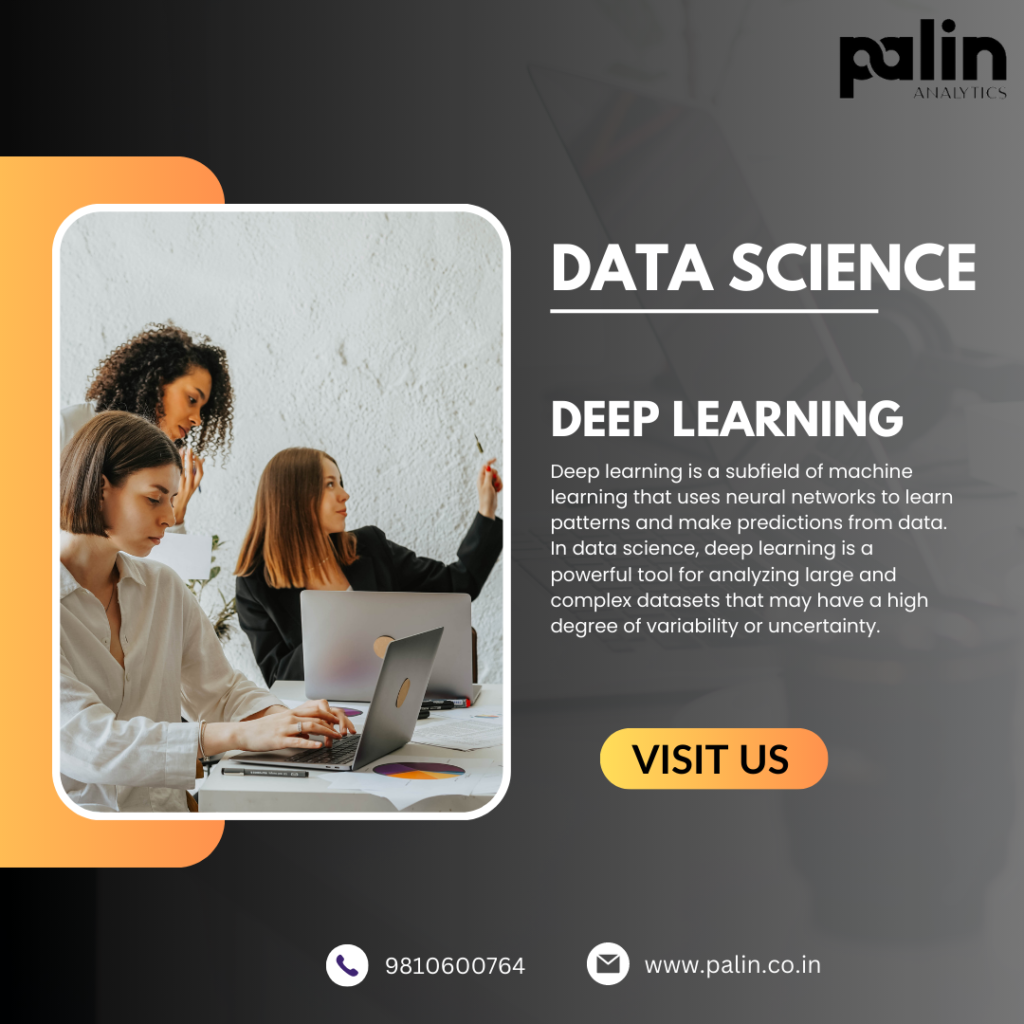Deep learning is a subfield of machine learning that uses neural networks to learn patterns and make predictions from data. In data science, deep learning is a powerful tool for analyzing large and complex datasets that may have a high degree of variability or uncertainty.
Deep learning models consist of multiple layers of interconnected neurons that process input data and learn from it to make predictions or decisions. These models can learn to recognize patterns in images, text, and other types of data without being explicitly programmed to do so.
Some common applications of deep learning in data science include:
- Image and video recognition: Deep learning models can be trained to recognize objects, faces, and other features in images and videos, which can be useful for applications like self-driving cars, surveillance, and medical imaging.
- Natural language processing: Deep learning models can be used to analyze and generate natural language text, which can be useful for applications like language translation, chatbots, and sentiment analysis.
- Recommendation systems: Deep learning models can be used to analyze user behavior and recommend products, services, or content based on their preferences and interests.
Overall, deep learning is a powerful tool for data scientists to extract insights from complex data and make accurate predictions or decisions. However, building and training deep learning models requires a high degree of expertise and computing power, so it is important to have a solid understanding of the underlying principles and techniques before diving into deep learning projects.
Data science deep learning can be used in a variety of applications to help solve complex problems and extract insights from large and complex datasets. Here are some examples:
- Image and speech recognition: Deep learning models can be used to analyze and recognize patterns in images, videos, and speech data. This can be used in applications like self-driving cars, facial recognition, and speech-to-text transcription.
- Natural Language Processing: Deep learning models can be used to analyze and generate natural language text, which can be useful for applications like language translation, chatbots, and sentiment analysis.
- Fraud detection: Deep learning models can be trained to detect patterns and anomalies in financial data, which can be used to identify fraudulent transactions and prevent financial crimes.
- Recommendation systems: Deep learning models can be used to analyze user behavior and recommend products, services, or content based on their preferences and interests.
- Predictive maintenance: Deep learning models can be used to analyze sensor data from machinery to predict when maintenance is needed. This can help reduce downtime and increase the lifespan of equipment.
Overall, data science deep learning can be used in a variety of applications to help organizations make data-driven decisions and solve complex problems. However, building and training deep learning models requires a high degree of expertise and computing power, so it is important to have a solid understanding of the underlying principles and techniques before diving into deep learning projects.

